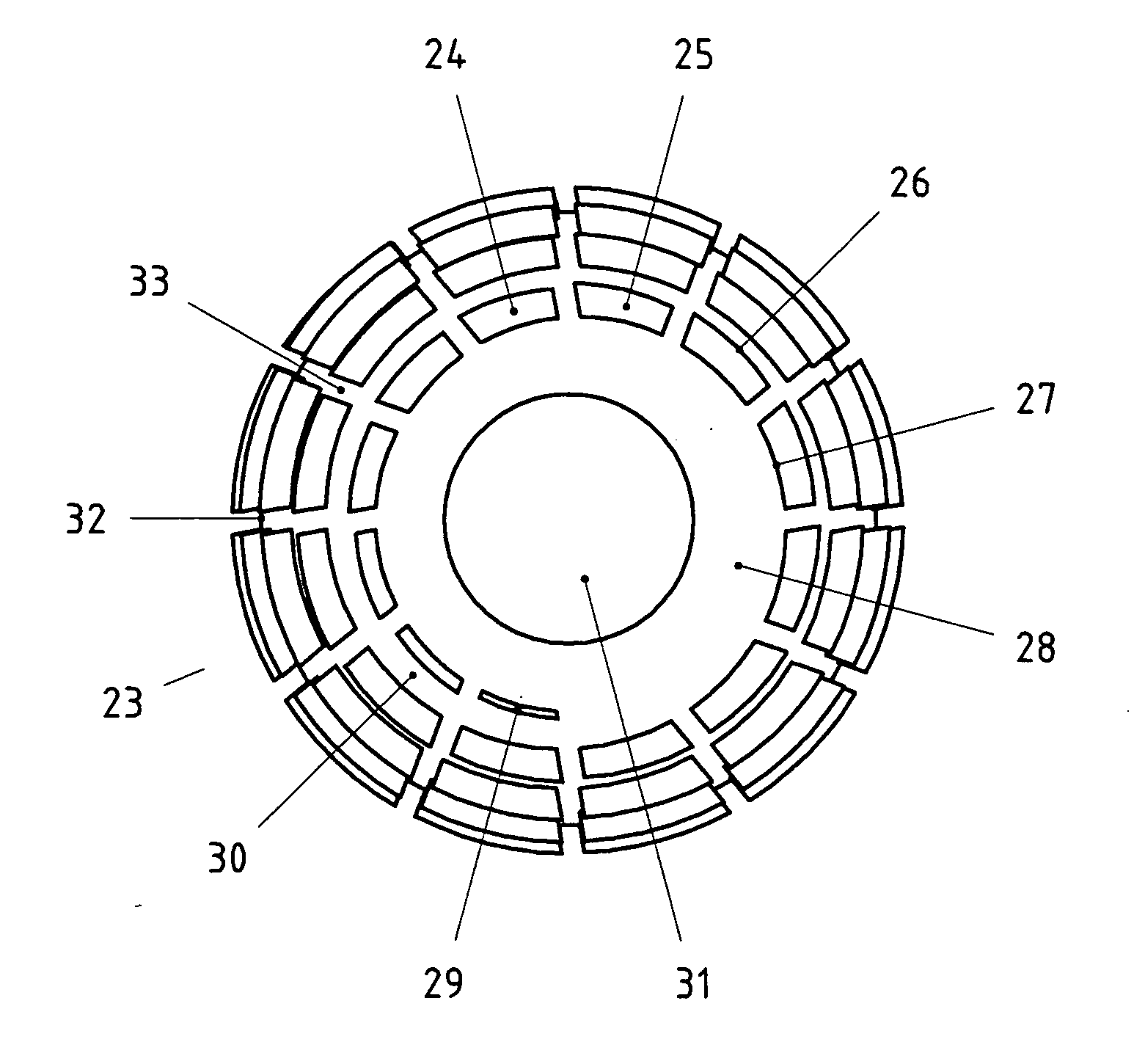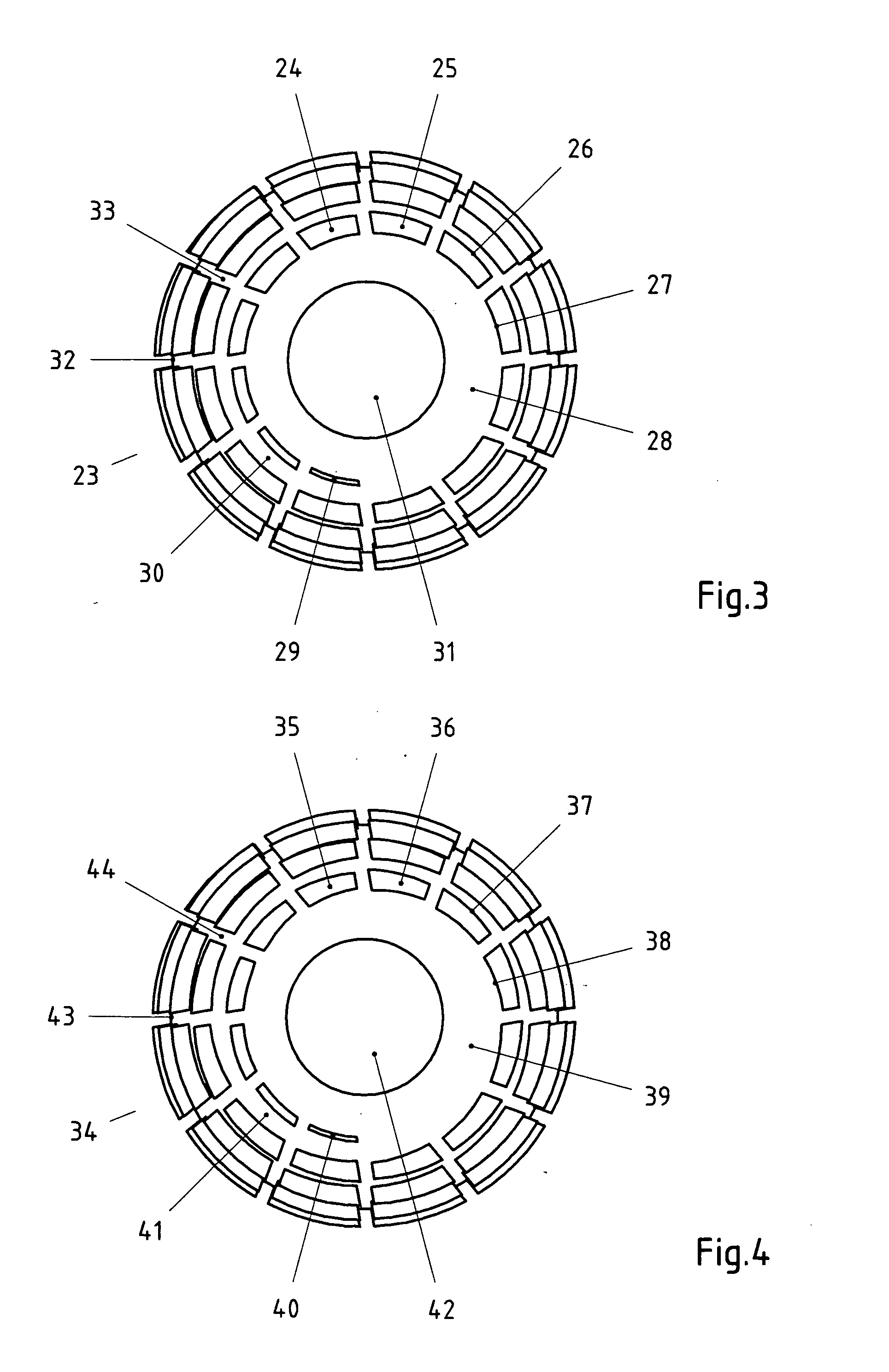Hobble turning method and preferred applications for said method
- Summary
- Abstract
- Description
- Claims
- Application Information
AI Technical Summary
Benefits of technology
Problems solved by technology
Method used
Image
Examples
Embodiment Construction
[0063] The drawing in FIG. 1 presents the pole-side view of a hemispherical screw-in type artificial hip joint socket 1 with a flat thread according to state-of-the-art based on an example with a 1.3 magnification. In the example the nominal diameter is 54 mm, the average tooth height is 2.6 mm, the pitch is 5 mm and the bottom hole diameter is 22 mm. These basic dimensions were selected for technical drawing reasons and are also retained in drawing FIGS. 2 through 4 to allow better comparability. Similarly, the windup angle of the tapping groove(s) has been set at 0° throughout in order to reduce the drawing work. It is known that a woundup tapping groove(s) offers advantages with respect to a more favorable cutting angle and a more evenly distributed transfer of forces.
[0064] A dome shaped thread-free area 6 on the shell body continues from the bottom hole 9 of the screw-in type artificial hip joint socket 1. In the drawing the diameter of the shell body is represented by the equ...
PUM
| Property | Measurement | Unit |
|---|---|---|
| Angle | aaaaa | aaaaa |
| Speed | aaaaa | aaaaa |
| Area | aaaaa | aaaaa |
Abstract
Description
Claims
Application Information
 Login to View More
Login to View More - R&D Engineer
- R&D Manager
- IP Professional
- Industry Leading Data Capabilities
- Powerful AI technology
- Patent DNA Extraction
Browse by: Latest US Patents, China's latest patents, Technical Efficacy Thesaurus, Application Domain, Technology Topic, Popular Technical Reports.
© 2024 PatSnap. All rights reserved.Legal|Privacy policy|Modern Slavery Act Transparency Statement|Sitemap|About US| Contact US: help@patsnap.com










